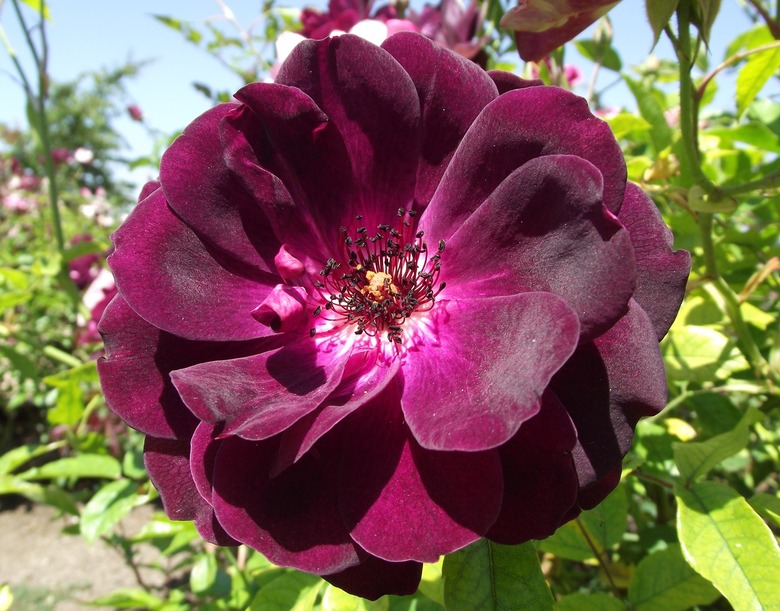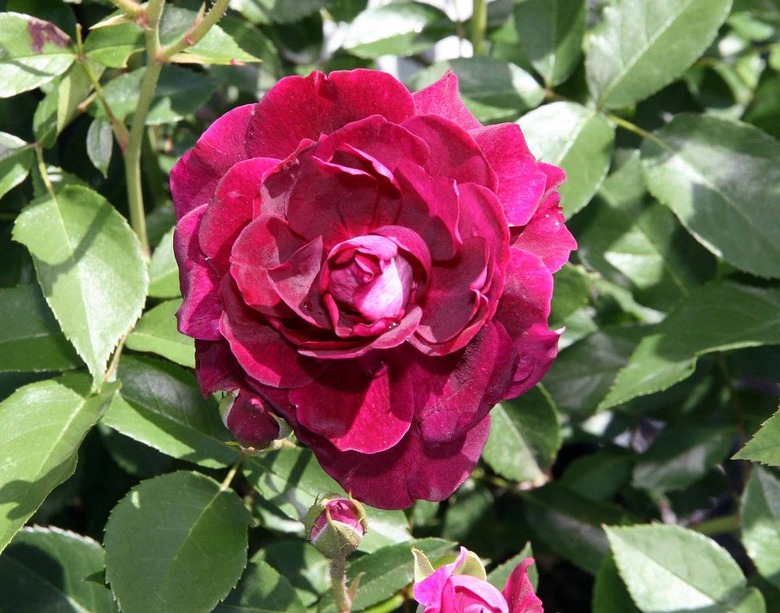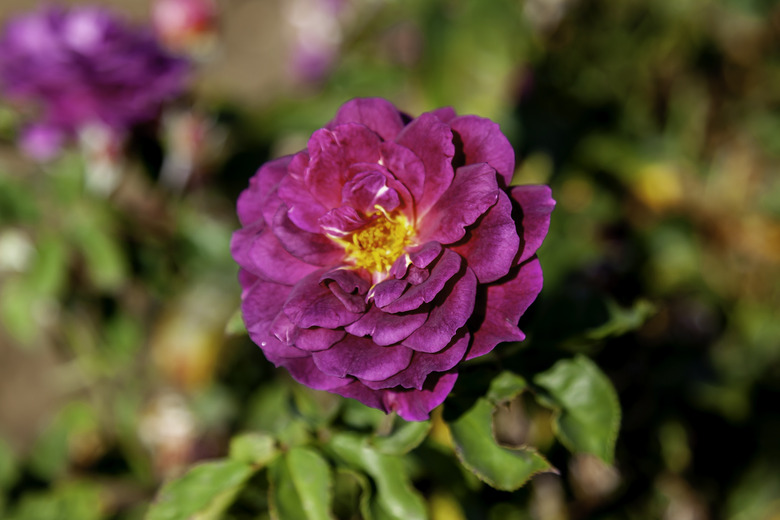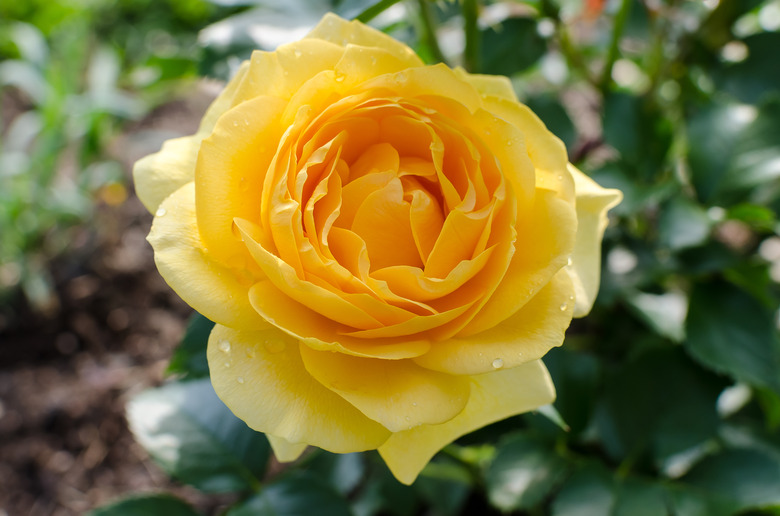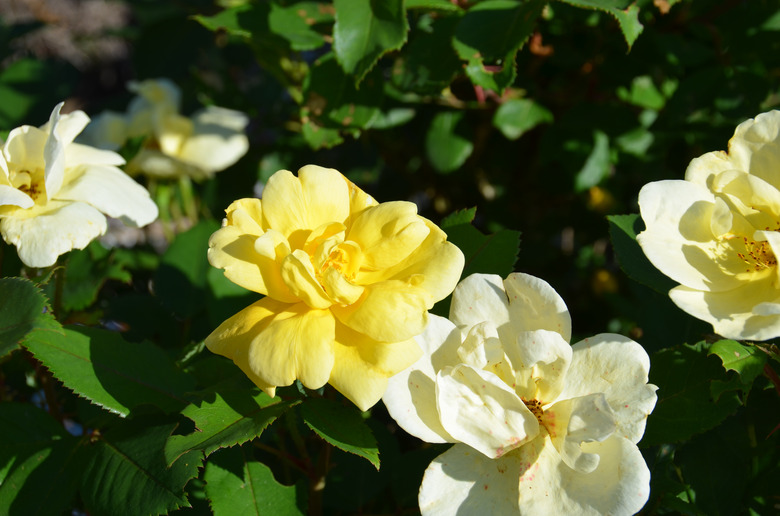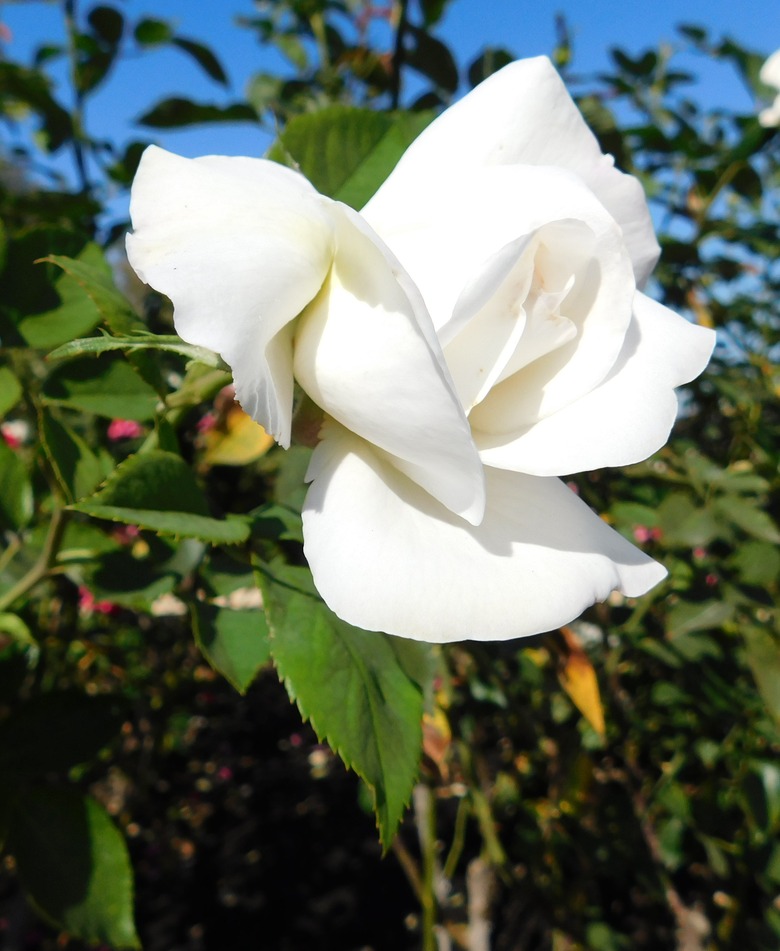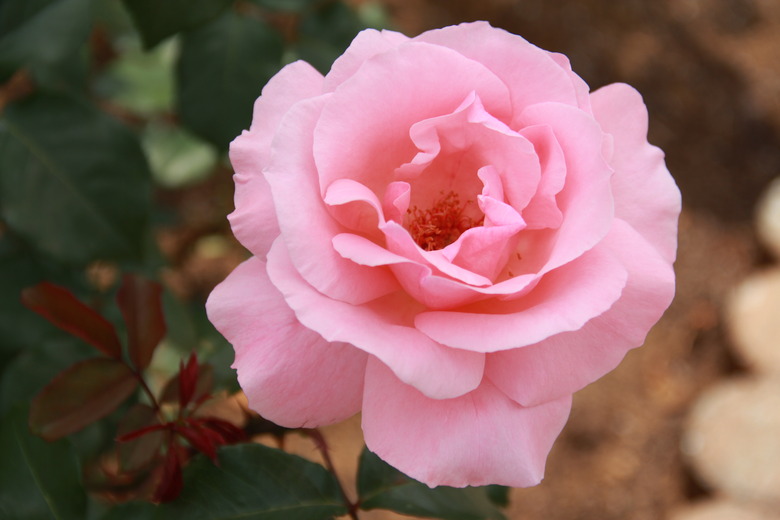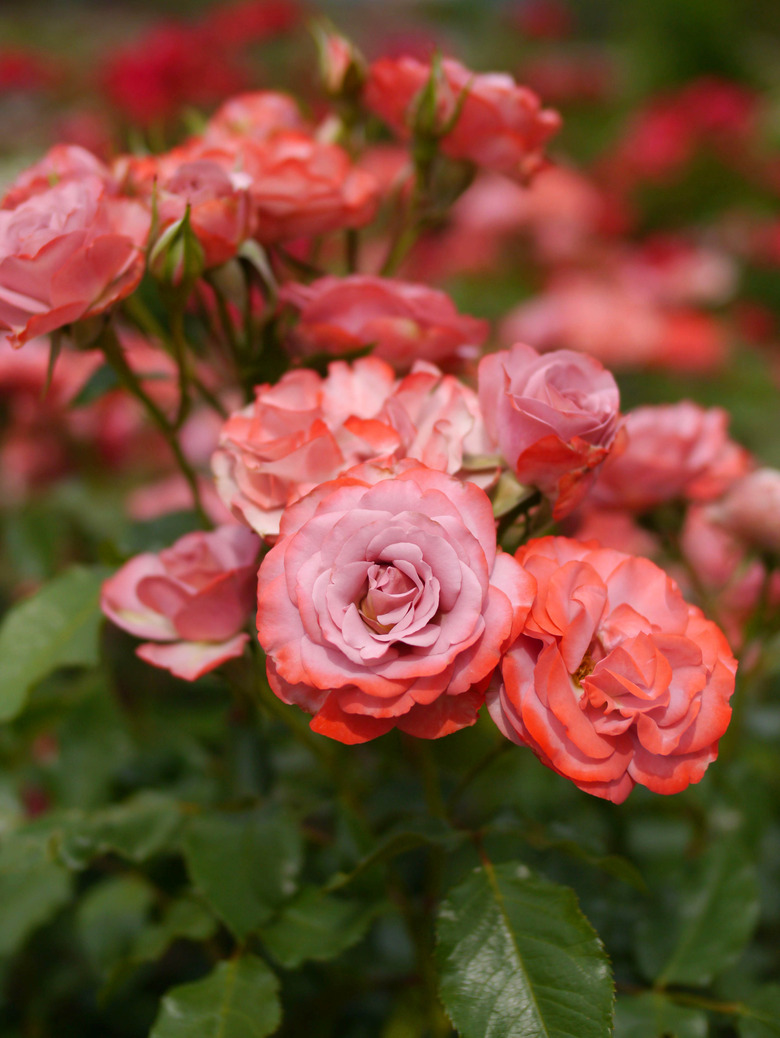Types Of Rose Trees
Rose trees, also known as standards, add color and eye-catching structure to gardens. These elegant plants feature a long, slender stem with a full, rounded crown of flowers at the top, which is achieved through a combination of grafting and pruning.
One of the most important parts of creating rose trees is choosing the right type of rose.
Thousands of cultivars across more than 100 species of roses (Rosa spp.) exist in the world, from heirlooms to modern tea rose hybrids, but not all rose varieties are suited to growing as rose trees. Learning which roses will work and which won't is an important first step toward growing rose standards at home.
Tip
Most roses grow well in USDA hardiness zones 5 to 11, but hardiness varies greatly between cultivars and species.
About Rose Trees or Standards
In the simplest terms, rose standards are created by grafting scions from creeping, climbing or shrub roses onto rootstock to give the appearance of a tree. Up to three different plants can be grafted together to create a rose standard—the roots, the trunk and the canopy—which makes these plant structures susceptible to a variety of injuries and disease.
Hardy rootstock is typically used, but rose standards are highly susceptible to cold damage at the graft. Some rose standards are grown on their own roots, such as the extra cold-hardy Polar Joy (Rosa 'Balore'), which grows in USDA hardiness zones 4 to 7.
Growing rose trees at home is a labor of love, because they are fussy plants. So consider the benefits and drawbacks before you commit to their cultivation.
Benefits of Rose Standards
* Adds vertical structure and visual interest to outdoor areas.
- Easier to prune and spray without stooping.
- Elevated crown makes them less susceptible to disease and bug infestation.
Drawbacks of Rose Standards
* Must be staked to provide support.
- Needs additional protection in winter and in summer to protect against sun-scald.
- Requires more frequent watering than other roses.
Floribunda Rose Varieties
Floribunda roses share many traits in common with polyantha and tea roses, which were first used to create them. They produce clusters of flowers similar to polyantha roses but with a flower shape similar to a tea rose.
Floribundas rarely exceed 3 feet in height, making them a shorter rose plant, but they still make excellent tree roses.
Burgundy Iceberg Rose
All Iceberg series roses work well as rose standards, but the Burgundy Iceberg (Rosa 'PROse') rose stands out with its deep purple color, which makes it an eye-catching focal point for any garden.
This variety grows best in USDA zones 5 to 9, where it will bloom all summer long despite heat and humidity.
Tip
Burgundy Iceberg has a light, honey-like scent.
Ebb Tide Rose
Another dark-colored floribunda that makes a showy standard is Ebb Tide (Rosa 'Ebb Tide'), a rose with a smoky, plum-purple color. It grows well in warmer climates without harsh winter weather within hardiness zones 7 to 11.
Ebb Tide is a compact shrub rose with a rounded growth habit that will create a rose tree with a lush, bushy appearance. Its most notable feature is the scent of its flowers, which have notes of citrus and clove.
Julia Child Rose
Julia Child (Rosa 'WEKvossutono') distinguishes itself from other floribunda roses with its butter-yellow flowers, which have a scent reminiscent of licorice and cloves. It grows best in USDA hardiness zones 4 to 9, where it grows best in full sun with fertile, well-draining soil.
Julia Child blooms for up to five months out of the year, so it makes a striking and long-lasting yellow tree rose for patio containers and garden beds.
Hybrid Tea Rose Varieties
Most commonly cultivated garden roses are hybrid tea roses. Thousands of varieties of these showy, disease-resistant roses have been produced since they were first created in 1867.
Hybrid tea roses are used to create rose standards with beautiful flowers at the tips of long stems, which are suitable for use as cut flowers.
Sunny Knock Out Rose
Knock Out rose varieties such as Sunny Knock Out (Rosa 'Radsunny' PP #18,562) make a showy addition to rose gardens within USDA zones 4 to 9. They are attractive, low-maintenance rose trees that resist common diseases but are susceptible to frost damage in colder areas.
Sunny Knock Out rose flowers are fragrant with soft yellow petals that turn creamy white as they age.
Sugar Moon Rose
Hybrid tea rose varieties such a Sugar Moon (Rosa 'Sugar Moon') make elegant patio tree roses or landscape standards that double as a source of cut flowers, because they have long, straight stems.
This variety grows well in USDA plant hardiness zones 5 to 9 but is typically only fully hardy to zone 6 when grown as a rose standard.
Grandiflora Rose Varieties
Grandiflora roses resulted from the crossing of hybrid tea and floribunda roses. They are large roses that can reach a height of 8 to 10 feet when grown on their own rootstock.
Grandiflora roses have a long blooming season and produce roses that vary in size from 2 1/2 to 3 1/2 inches in diameter with double or single petals.
Queen Elizabeth Rose
Perhaps the most notable variety of grandiflora rose is Queen Elizabeth (Rosa 'Queen Elizabeth'), a tall and vigorous shrub that grows best in USDA plant hardiness zones 5 to 10.
It blooms continuously during the growing season, producing fragrant, pale pink flowers in bouquet-like clusters.
Solitude Rose
Another grandiflora rose that can be trained to a standard is Solitude (Rosa 'Solitude'). It grows best in USDA zones 6b to 9b, where it bears clusters of fragrant blooms with a pinkish-orange tone all season long.
Like other grandiflora rose bushes, it has an upright and vigorous growth habit.
References
- Midwest Gardening: Tree Roses
- American University of Beirut: Rosa
- University of California Cooperative Extension: Types of Modern Roses
- Jackson and Perkins: Burgundy Iceberg Rose
- White Flower Farm: Julia Child Rose
- Kiefer Nursery: Sunny Knock Out Rose
- Jackson and Perkins: Sugar Moon Rose
- David Austin Roses: Ebb Tide Rose
